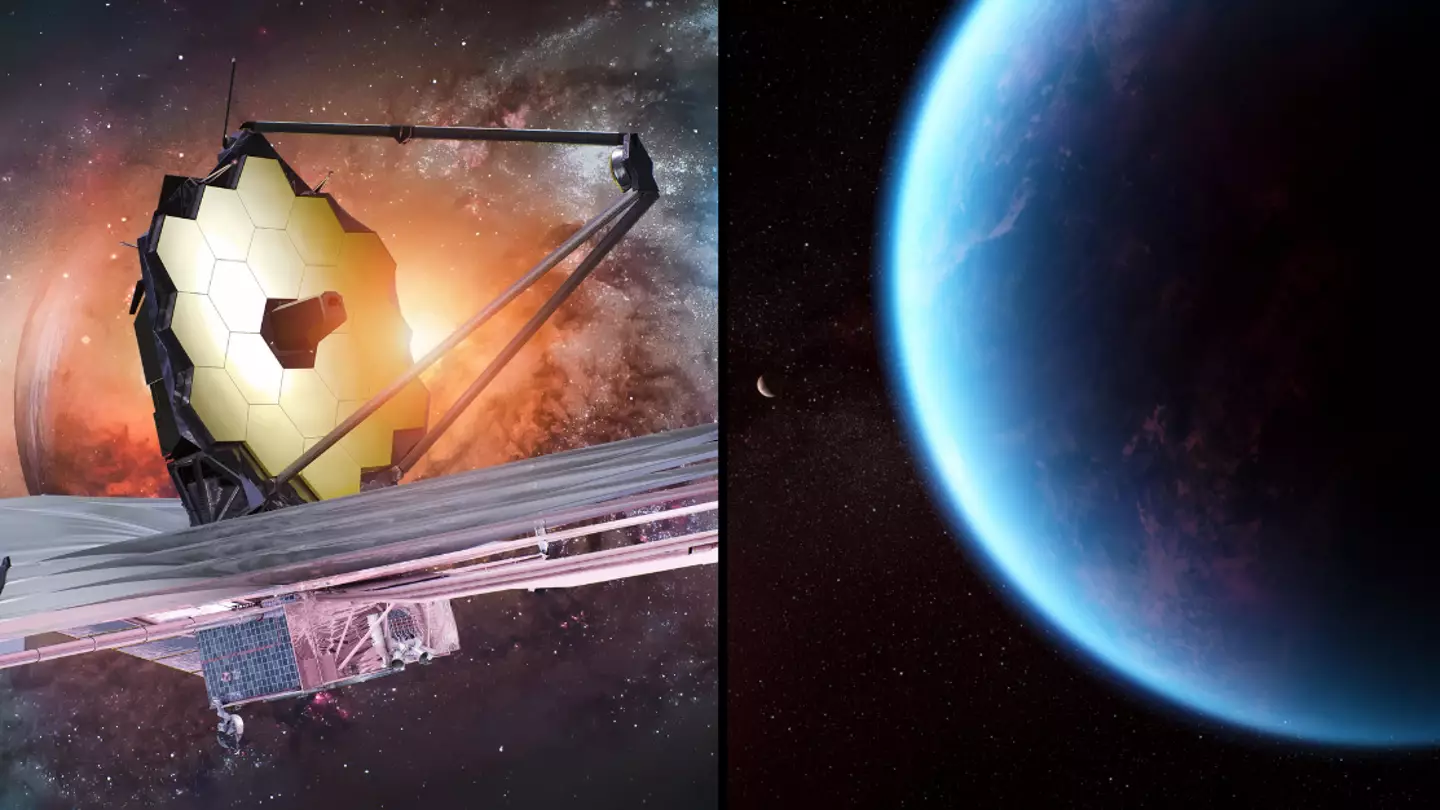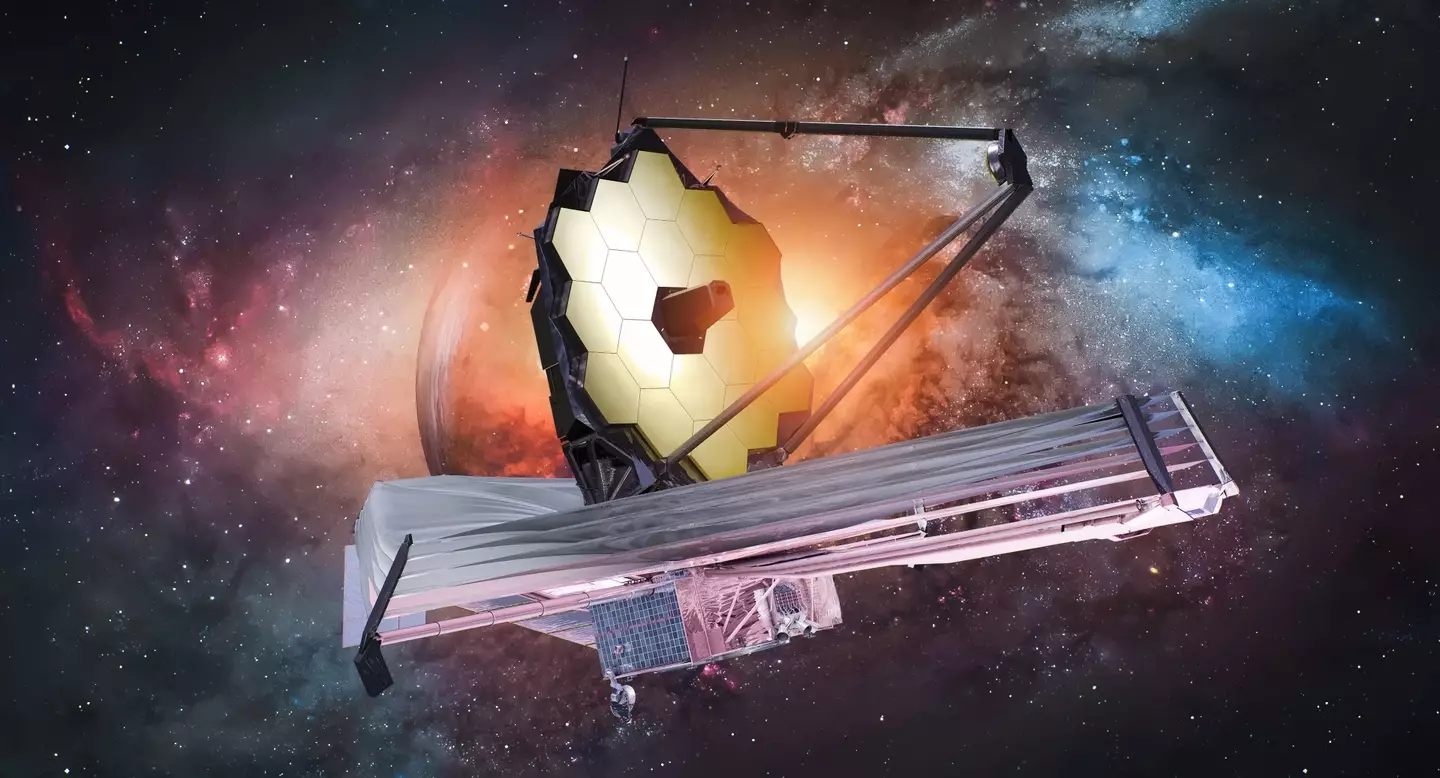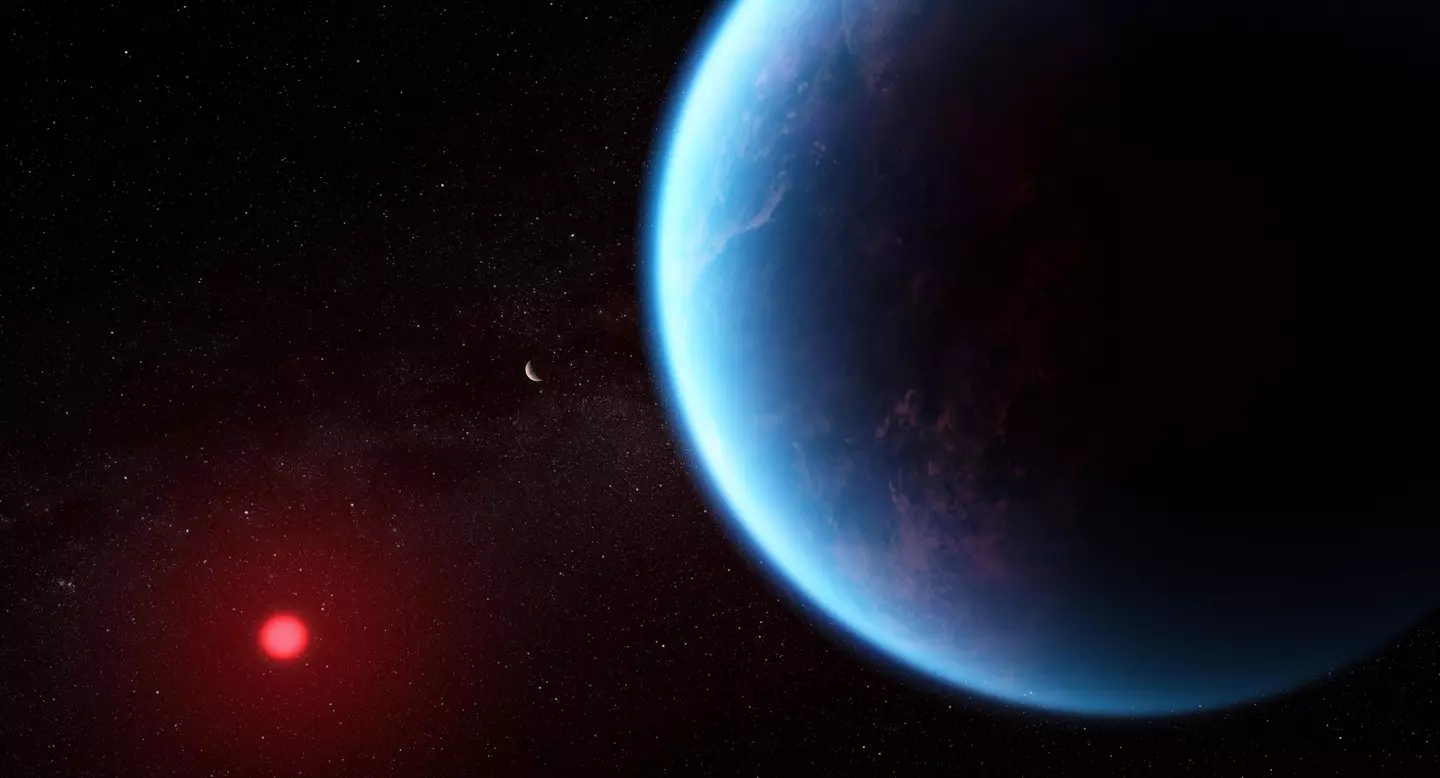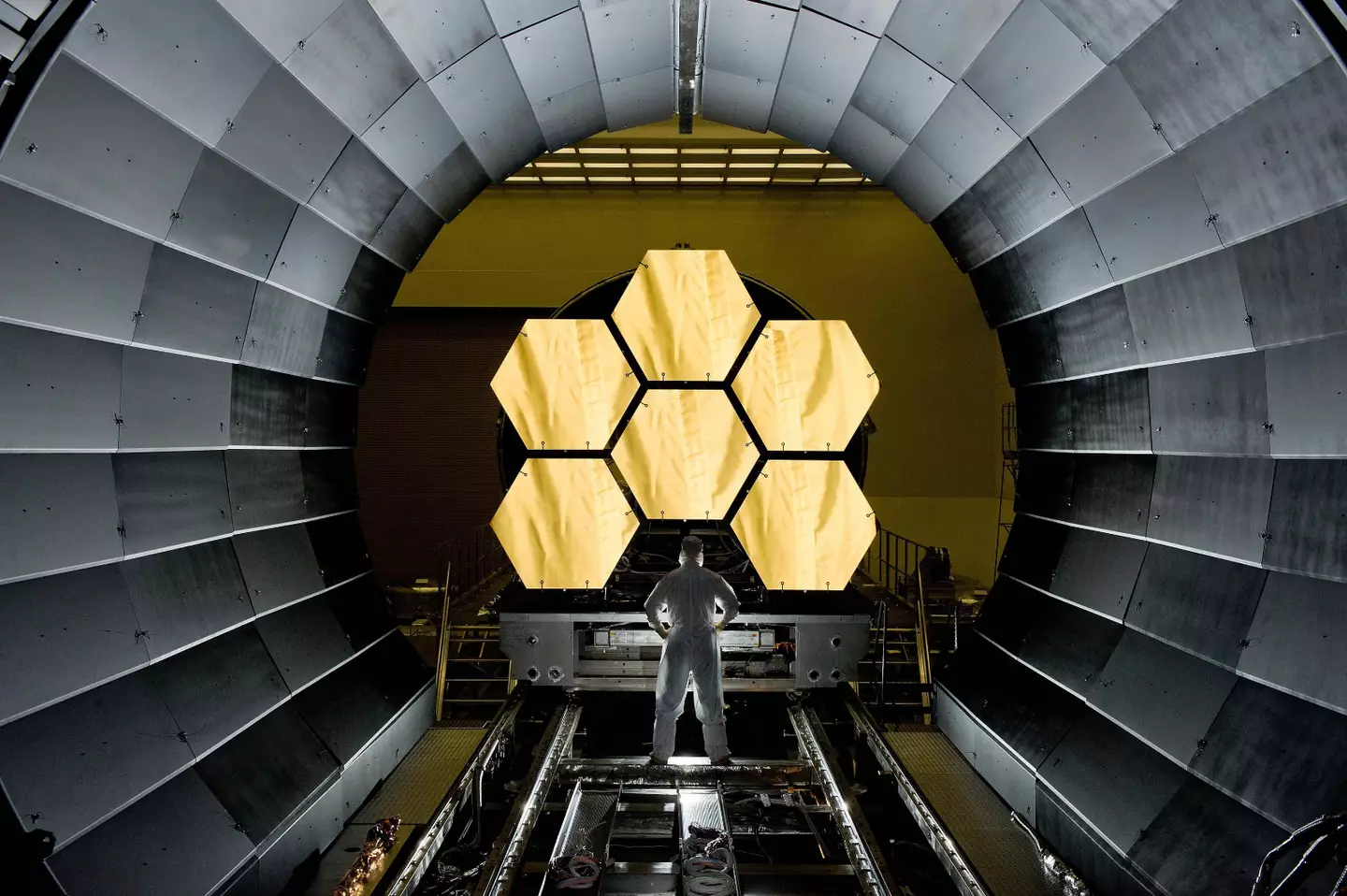
The secrets of alien life in the universe could finally be uncovered by NASA today through the James Webb Space Telescope (JWST).
That's after astronomers came across a planet full of gas that could 'only be produced by life'.
Just days after finding a 'real surprise' at the beginning of the universe, the equipment is turning its Near-InfraRed Camera (NIRCam) towards the distant planet, the $10 billion (£8.05 billion) rated JWST is - as of today (26 April) - all eyes on a planet eight times the size of Earth.
Called K2-18b, the planet orbits around a cooling dwarf star called K2-18, some 120 light-years from our planet.
Advert
Weighing in at 8.6 times the size of Earth, scientists studying the planet have found a gas that to human knowledge, can only be produced by life itself.
K2-18b is full of other chemical compounds found on Earth; it's full to the brim with methane and carbon dioxide while having a shortage of ammonia.
It's this chemical imbalance that has led scientists to support the hypothesis that there could massive oceans covering its surface underneath an atmosphere rich in hydrogen - something astronomers call 'Hycean exoplanets'.
Observations by JWST have provided the key to the journey so far.

"Initial Webb observations also provided a possible detection of a molecule called dimethyl sulfide (DMS)," NASA says. "On Earth, this is only produced by life.
Advert
"The bulk of the DMS in Earth’s atmosphere is emitted from phytoplankton in marine environments."
We won't know the results of the new tests by JWST for months on end, with them needing to be analysed, peer-reviewed and then published to the public.
Dr. Nikku Madhusudhan, an astrophysicist at the University of Cambridge, is leading the current project.
Speaking to The Times, Dr. Madhusudhan said 'it was a real shock' and he had 'sleepless nights for a week' when results indicated DMS on the planet.

"That week, I didn’t even muster the courage to break it to my own team," he said.
Advert
Humanity have known about K2-18b for nine years, with it first discovered back in 2015.
Four years later, water vapour was found in its atmosphere before the more recent JWST reports finding carbon dioxide in its atmosphere alongside methane.
K2-18b lies in the habitable zone of its star but there's no certainty when it comes to supporting life.
As it stands, researchers are more than 50 per cent confident that DMS is on the planet. It's not conclusive, but there is big hope for what will be found.

NASA says: "The planet’s large size — with a radius 2.6 times the radius of Earth — means that the planet’s interior likely contains a large mantle of high-pressure ice, like Neptune, but with a thinner hydrogen-rich atmosphere and an ocean surface.
Advert
"Hycean worlds are predicted to have oceans of water. However, it is also possible that the ocean is too hot to be habitable or be liquid."
Featured Image Credit: NASA / Getty Stock Images / NASA, CSA, ESA, J. Olmsted (STScI), Science: N. Madhusudhan (Cambridge University)Topics: Aliens, James Webb Space Telescope, NASA, Space, Viral, Weird, World News, Education, UK News